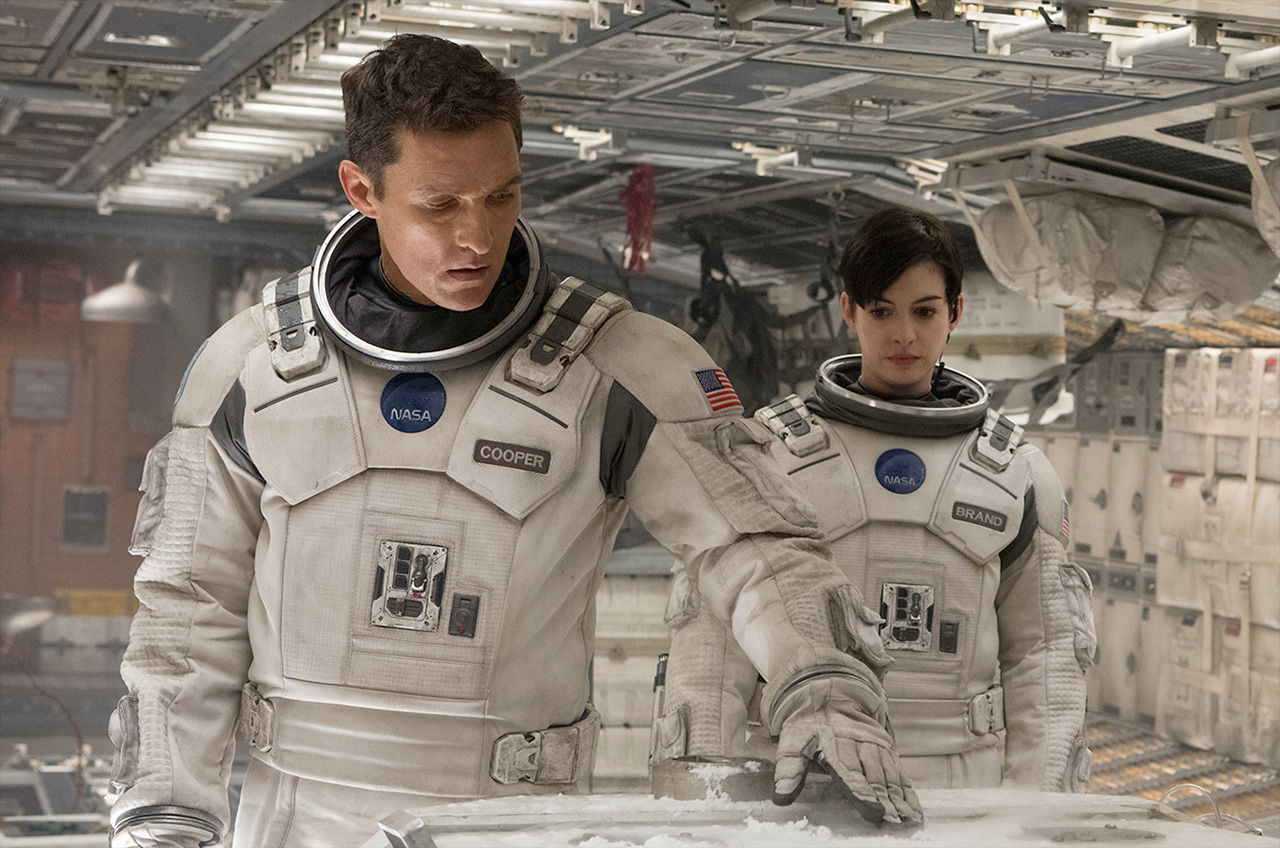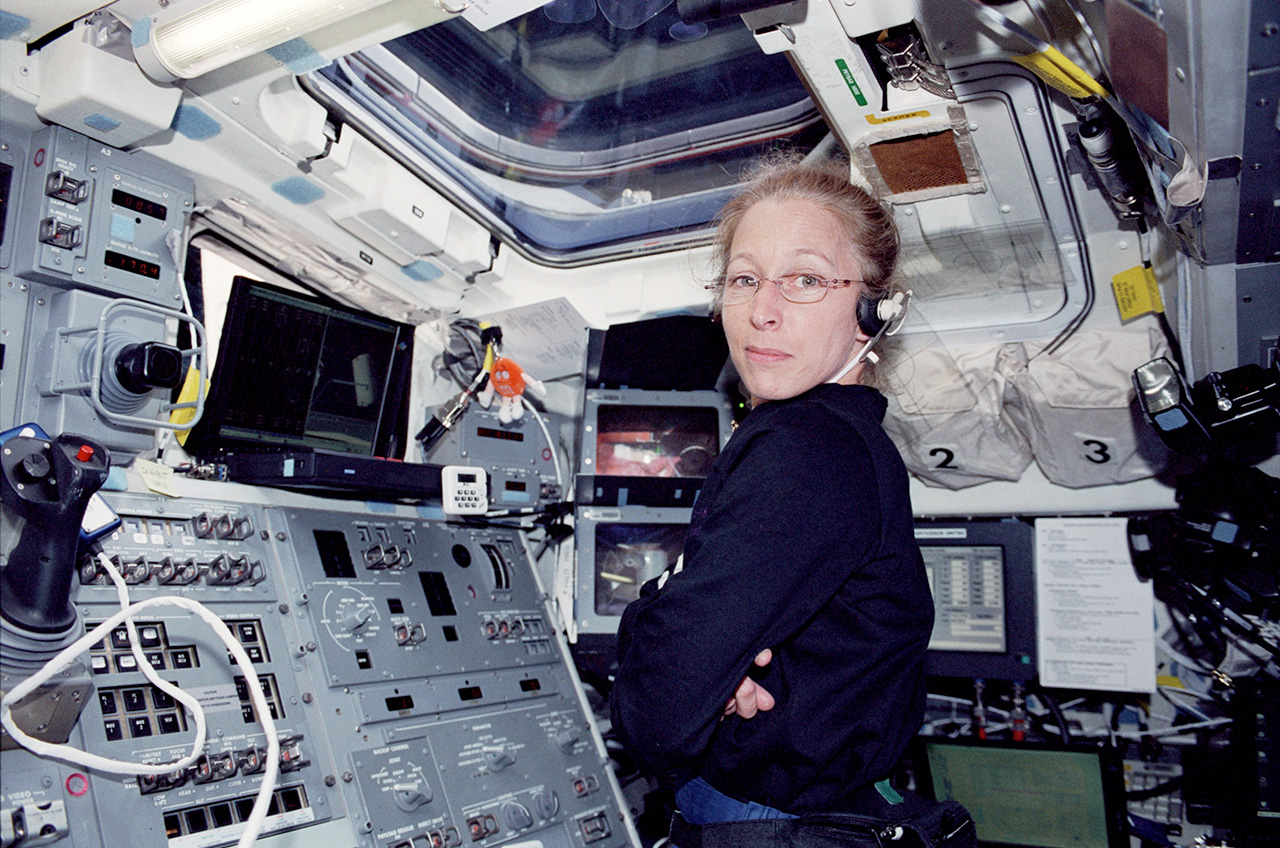'Interstellar' Actors Sought Space Tips from Real NASA Astronaut

Actors Matthew McConaughey and Anne Hathaway, who play astronauts in Christopher Nolan's new science fiction movie "Interstellar," learned how to portray life in microgravity from a veteran NASA space traveler.
"There is an astronaut named Marsha, who consulted on the film," Hathaway told an audience of actors and press after an early screening of "Interstellar" in Los Angeles. "I am embarrassed [for forgetting her full name] because she is an American hero and has been up in space five times."
That is Marsha Ivins, a retired NASA astronaut whose five missions on the space shuttle spanned more than 1,300 hours in Earth orbit from 1990 to 2001. Ivins flights helped deploy and recover satellites, restock supplies and swap out crewmembers at the Russian space station Mir, and deliver the United States' science laboratory "Destiny" to the International Space Station. ['Interstellar': A Space Epic in Pictures]
"She got on the phone with me and talked with me a lot and sent me a lot of videos," Hathaway shared. "One, in particular, that I thought was so cool, was a demonstration ofhow liquid works in space. They took out a packet of orange juice and this orange globule came out and kind of floated around. And you can cut it with dental floss."
"That just blew me away! It was so cool," exclaimed the actress, who's Dr. Amelia Brand opposite McConaughey's Joseph Cooper in "Interstellar."
Ivins, who departed NASA in 2011, was introduced to the Interstellar cast and crew as a result of her connection to another series of movies.
"One of our greatest resources [while making the movie] was IMAX and their relationship with NASA because over the last 30 years, the same cameras we used to shoot the film, they have gone into space," Nolan told reporters at a press conference following the L.A. screening. "They have been in low Earth orbit, they have shot the space shuttle, the International Space Station, the repairs on the Hubble and they've this incredible library of films that filmmakers like Toni Myers has put together."
Breaking space news, the latest updates on rocket launches, skywatching events and more!
"Toni Myers put us in touch with Marsha Ivins, [who] was a helpful resource for myself and also the actors," Nolan revealed.
In "Interstellar," which opens throughout the United States on Friday (Nov. 7), an agricultural crisis on Earth inspires a daring mission to pierce the barriers of time and space in a human gamble against extinction. The film is set sometime in the near-future, though it goes well beyond the scope of any space missions NASA has achieved or has planned.
"I love science fiction movies," Ivins wrote in an essay for TIME magazine last year, "the more scientifically fictional the better. I am totally willing to suspend belief in, and the need to cling to, reality."
"The point, after all, is to escape to worlds of dreams and imagination, and I'm all over that," she continued. "But in space movies intended to be more realistic, I'm a bit more sensitive."
Nolan and his creative team based the look and feel of the movie's spaceships on what they saw in the IMAX films that Ivins and her fellow astronauts shot while in space.
"We tried to get the feeling of the detail correct," he said. "We tried to get the appropriate textures of what this kind of spacecraft would need. That weird tension between the physical intimacy of being in a ship, the fragile nature and industrial quality of it, and then the cosmic scale of where it was going."
"[So] we were so very happy when Marsha came to visit the set and seemed quite impressed with the way we put it together," Nolan noted. "It felt quite credible to her and that was a bit of a sigh of relief."
According to Hathaway, Ivins shared all kinds of aspects of astronaut life — including how to shower in space.
"Oh my god," Hathaway remarked. "So they basically get a water globule and they release that and you have to take your shower in sections because everything floats."
"So you remove whatever you're wearing and have to tie it to something," she continued. "Then you take this ball of water and put it on your skin, and then you have to lather up and then you have to, like, absorb all of the soap with the ball of water, which you then you get rid of, put your shirt back on and then do the whole thing again with your bottom half. Can you believe that? That's crazy!"
"So [Ivins] answered a lot of question like that," Hathaway said.
"You didn't have to do that for [the movie]," McConaughey interjected.
"No, that wasn't required," Hathaway replied. "There's no, like, cut shower scene."
Click through to collectSPACE to see more images from Christopher Nolan’s “Interstellar.”
Follow collectSPACE.com on Facebook and on Twitter at @collectSPACE. Copyright 2014 collectSPACE.com. All rights reserved.

Robert Pearlman is a space historian, journalist and the founder and editor of collectSPACE.com, a daily news publication and community devoted to space history with a particular focus on how and where space exploration intersects with pop culture. Pearlman is also a contributing writer for Space.com and co-author of "Space Stations: The Art, Science, and Reality of Working in Space” published by Smithsonian Books in 2018.
In 2009, he was inducted into the U.S. Space Camp Hall of Fame in Huntsville, Alabama. In 2021, he was honored by the American Astronautical Society with the Ordway Award for Sustained Excellence in Spaceflight History. In 2023, the National Space Club Florida Committee recognized Pearlman with the Kolcum News and Communications Award for excellence in telling the space story along the Space Coast and throughout the world.


